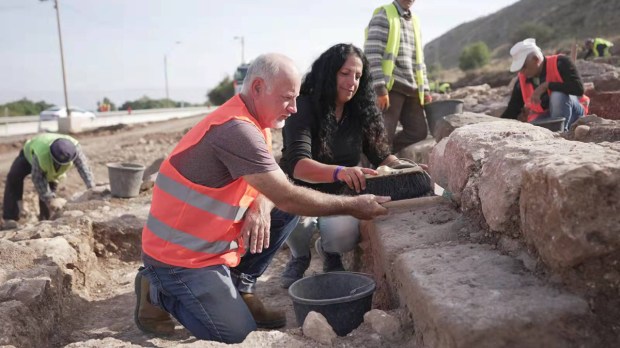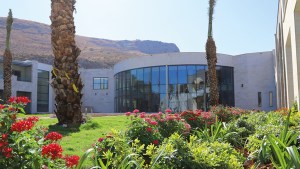Lenten Campaign 2025
This content is free of charge, as are all our articles.
Support us with a donation that is tax-deductible and enable us to continue to reach millions of readers.
Archaeologists with the Israel Antiquities Authority (IAA) have made a unique discovery at the site of Mary Magdalene’s home town. For the first time, a second synagogue has been unearthed in a Galilean town of the Second Temple Era.
The excavation comes on the heels of the 2009 discovery of an ornate synagogue on the residential side of town. Ruth Schuster, of Haaretz, reports that the newly found site is smaller than the residential location, and is located in the industrial section of the fishing village of Migdal, which was founded in the 2nd century BC. According to the report, the Babylonian Talmud refers to the town as “Magdala Nunayya,” meaning “Town of Fishes.” Both sites were firmly dated to the Second Temple Era, which means they were likely in use around during the time of Christ.
The buildings
The structures were both made of the same materials, mostly volcanic basalt and limestone. They were also similarly designed, with a central meeting hall and rooms on the sides. It was in the decoration, however, that interiors differed. The ornate synagogue adorned its walls with brightly colored mosaics, while the smaller building was sparse and plastered.
Experts are unsure why there were two synagogues in the same town. It would be easy to assume one came after the other, but artifacts found at the sites suggest they were both active at the same time. It is possible that the population of Migdal was so high that one synagogue wasn’t enough. Records from the Roman-era Jewish historian Josephus suggest the town boasted around 40,000 citizens.
Two synagogues, one town
Prof. Adi Erlich, head of the Zinman Institute of Archaeology at the University of Haifa, suggested that such a large Jewish population would naturally need more gathering spots.
“The fact we have found two synagogues shows that the Jews of the Second Temple period were looking for a place for religious, and perhaps also social, gatherings.”
One clue comes from what we know about the history of the practice of Judaism. During the Second Temple era, Jewish ritual and worship were centered in the Temple, at Jerusalem. While today’s synagogues are similar to churches in their function, in biblical times these houses were probably used for communal gatherings, learning the Torah, and cleansing.
It is also significant that the two buildings were on opposite sides of town. This could mean that each building catered to a different community living in the same city. The vast differences seen in decor could also suggest that each building was catering to a different class of society.
As both synagogues were active at the turn of the 1st century, it is quite possible that Mary Magdalene’s family frequented one of these locations. Jesus is also recorded as visiting the town, although there has yet to be found any indication that he visited either building.


